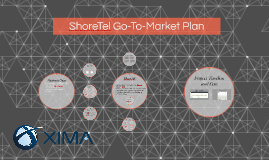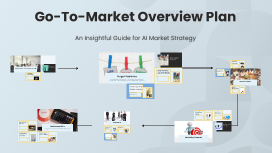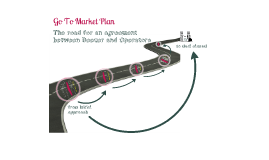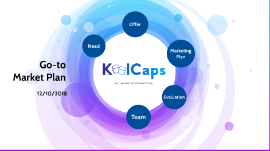Go-To-Market Overview Plan
Transcript: Assets Go-To-Market Overview Plan An Insightful Guide for AI Market Strategy Comment Identifying Key Segments Benefits to Customers - Create TAM, SAM, SOM - identify as FEW key segments as possible - Create segment overview - cost savings - increased efficiency -enhanced user experience Overall satisfaction that lead to loyalty and advocacy. Overview of Go-To-Market Strategy Introduction to Go-To-Market Strategy A Go-To-Market strategy is a blueprint that outlines how a company will sell its products or services to customers. It encompasses market research, target audience analysis, and competitive positioning, ensuring that offerings meet market demands effectively. Understanding the core components of a Go-To-Market (GTM) strategy is crucial for success in today's competitive landscape. A well-structured GTM plan ensures that a product or service reaches the right audience effectively and efficiently. Competitive Differentiators Understanding Customer Needs - critical to know where we 'win' and 'lose' against competitors. And understand how to communicate those differences Importance of Market Planning Target Audience Effective market planning is essential for minimizing risks and maximizing opportunities. It allows businesses to anticipate market trends, assess consumer behavior, and strategically allocate resources, ultimately leading to better decision-making and increased profitability. KEY - for those segments, drill itno and identify the pain points and value proposition for each segment Understanding the target audience is vital for a successful go-to-market strategy. Identifying customer segments, understanding their needs, and creating detailed personas can significantly enhance engagement and conversion efforts. Value Proposition Articulate how your product or service uniquely fulfills customer needs, setting you apart from competitors. It includes unique selling points, competitive differentiators, and outlines clear benefits for customers. Unique Selling Points Personas and Buyer Journey - features that are not offered by competitors - understand ICP intimately - turn ons, turn offs etc. - understand buyer journey Providing value Meet them where they are at - how can we build authority in thier space? - can we add value beyond their imediate need? (e.g. effective communication) - where does this ICP get their information? - events, outlets, publications, groups etc. Sales Strategy Key Performance Indicators A robust sales strategy is crucial for translating market insights into revenue. It defines how to convert leads into customers, maximizing the potential of the sales team to achieve business objectives. Digital Marketing Strategies Metrics and KPIs Lead Generation Techniques Sales Process Overview Key performance indicators are measurable values that demonstrate how effectively a company achieves key business objectives. Common KPIs for go-to-market strategies include customer acquisition cost, lifetime value, conversion rates, and market share. Effective measurement is crucial in determining the success of a go-to-market strategy. By setting clear key performance indicators (KPIs), organizations can track performance, optimize processes, and adjust strategies for continuous improvement. The sales process consists of key stages: lead generation, initial contact, needs assessment, proposal, negotiation, and closing. Each stage requires specific strategies to optimize conversions and meet sales targets effectively. Real-time data analysis enhances the adaptability of the process. Lead generation employs various techniques such as content marketing, social media outreach, and networking events. The use of CRM tools and analytics not only streamlines the process but also enhances lead qualification, ensuring a higher conversion rate. Adjustments and Recommendations Measuring Success Sales Team Structure Marketing Channels An effective sales team often consists of diverse roles including sales representatives, account managers, and sales engineers. A well-defined structure aids in specialization and accountability, enabling the team to respond adeptly to market demands. Measuring success involves evaluating established KPIs against real performance data. For instance, tracking the customer acquisition cost (CAC) over time allows businesses to assess the efficiency of their marketing spend and its impact on overall revenue growth. Consistently adjusting strategies based on KPI outcomes is vital for success. For example, if a certain marketing channel shows a high CAC, reallocating resources to more effective channels can lead to improved overall performance. Effective marketing channels are essential for reaching targeted audiences and driving engagement. Leveraging both digital and traditional strategies can maximize visibility and brand impact.

















